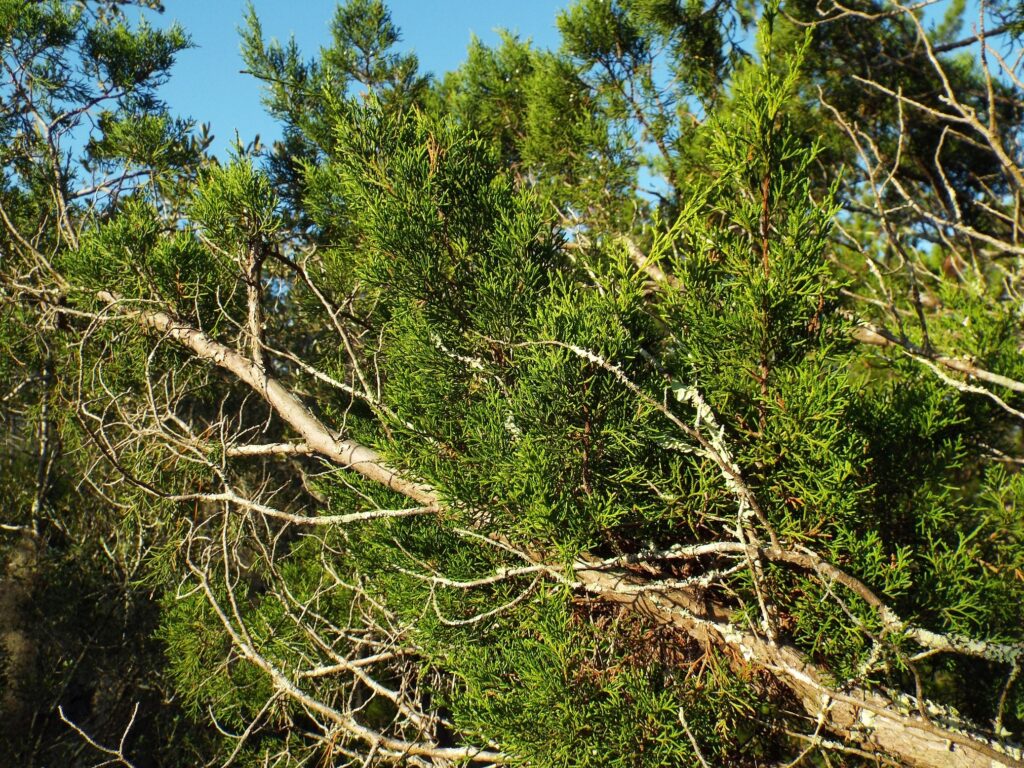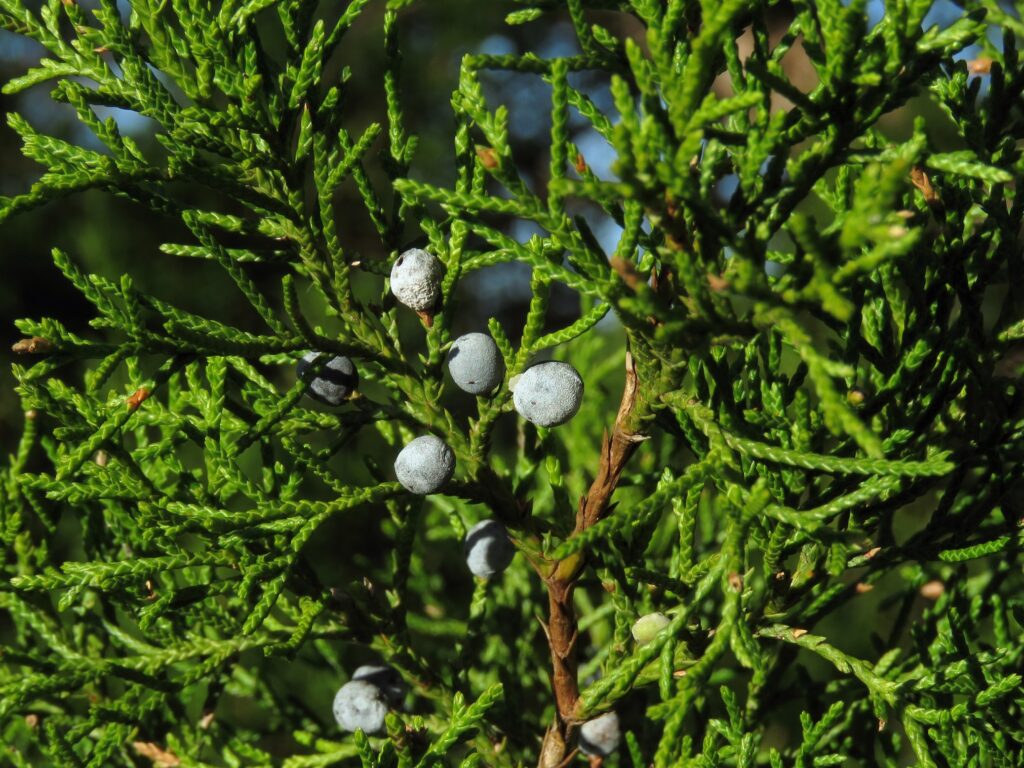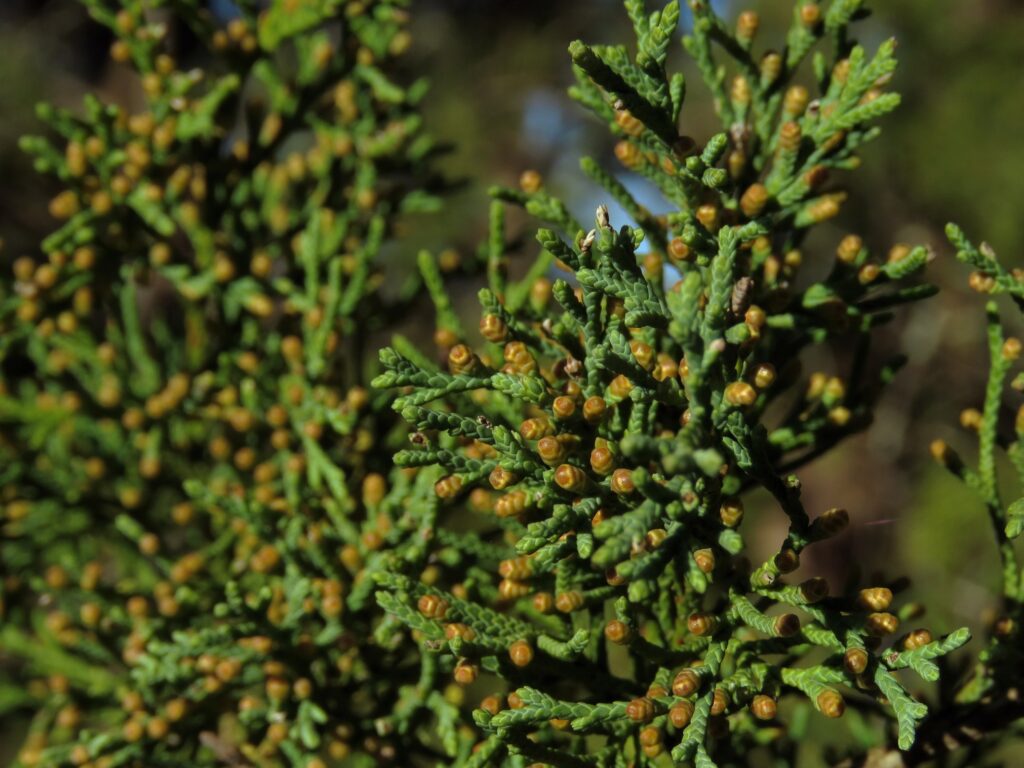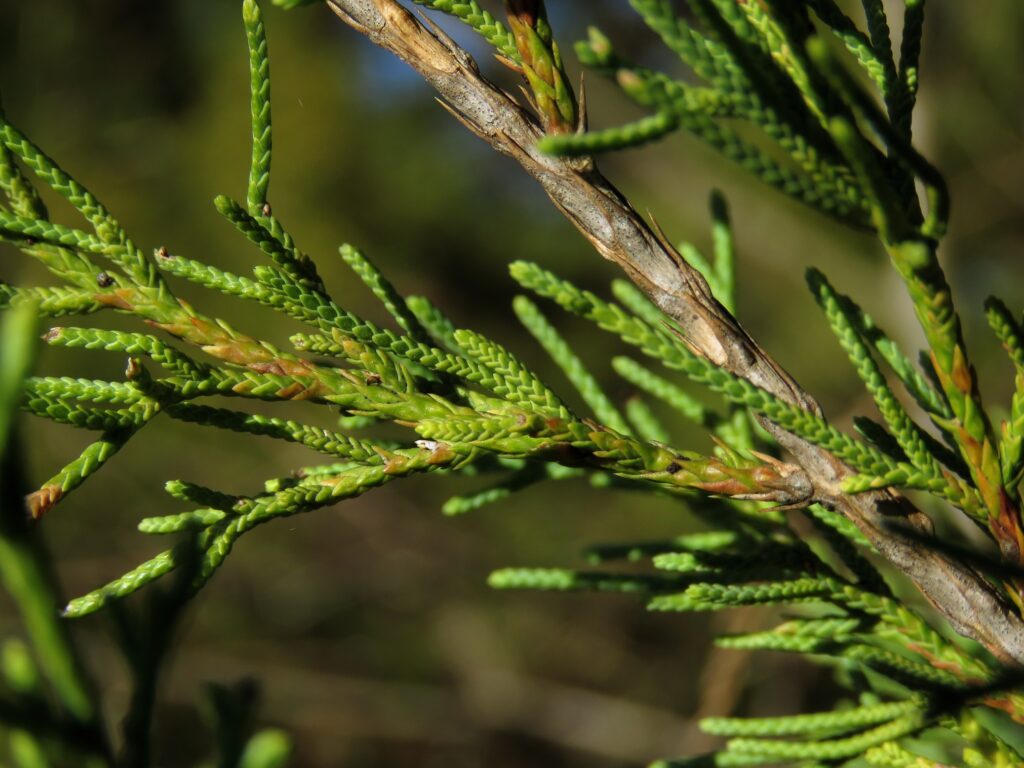






This week for Flora and Fauna Friday we’re looking at the second holiday plant in our 3 part series. This plant is one of dozens of species that have earned the title of “Christmas Tree” but this one is a native here on Edisto: the Eastern Redcedar, Juniperus virginiana.
The Eastern Redcedar is not a true Cedar, which are natives to Asia and members of the Pine family. It’s actually a Juniper, as the genus name suggests, and a member of the Cypress family. It’s a common woody plant throughout the entire Eastern US. It can grow as a hedge, bush, shrub, or a tree ranging in height from 15ft to 50ft tall. It has small evergreen scales and peeling reddish bark. In the lowcountry, most of what we see is the Southern Redcedar, Juniperus virginiana var. silicicola, which prefers maritime forests and is usually shrubbier in appearance. The Redcedar is a ridiculously hardy species that can be found in a myriad of habitats. From wetland edges, to sandhills, to saltmarsh hammocks, to oak forest understories, to fallow fields, to sandspits, Redcedars inhabit them all. They can live for centuries and frequently survive traumatic damage, including sheered off canopies, split trunks, toppling, and partial girdling. The Eastern Redcedar is dioecious, meaning there are both male and female trees. The foliage of males trees takes on an amber hue in winter as they develop pollen cones. When the pollen cones open, males trees can appear to be enflamed during a stiff breeze, emitting a smoky yellow cloud of pollen into the air. Female trees turn a blue green as their berry-like cones mature. These fleshy cones are an important food source for many birds, particularly the Cedar Waxwing which is named after its fondness for the fruit.
The Eastern Redcedar has several interesting uses beyond its use as a local Christmas tree and floral arrangements. (On a side note, your typical Christmas Tree is a Fraser Fir, Abies fraseri.) Its wood is rot resistance and is commonly used for fence posts. The heartwood is great for making both pencils and longbows. Also, the heartwood is a vibrant violet color when fresh. A remarkable sight to the unsuspecting woodsman. The aromatic compounds in the heartwood also repel moths, particularly the ones that dine on wool clothing. Lastly, but certainly not least, Juniper “berries” are an important flavoring in the spirit Gin.